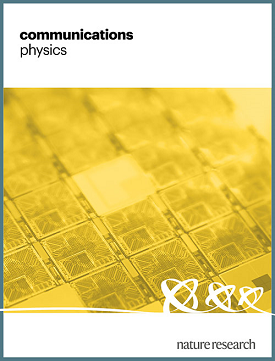Photonic counterdiabatic quantum optimization algorithm
IF 5.4
1区 物理与天体物理
Q1 PHYSICS, MULTIDISCIPLINARY
引用次数: 0
Abstract
One of the key applications of near-term quantum computers has been the development of quantum optimization algorithms. However, these algorithms have largely been focused on qubit-based technologies. Here, we propose a hybrid quantum-classical approximate optimization algorithm for photonic quantum computing, specifically tailored for addressing continuous-variable optimization problems. Inspired by counterdiabatic protocols, our algorithm reduces the required quantum operations for optimization compared to adiabatic protocols. This reduction enables us to tackle non-convex continuous optimization within the near-term era of quantum computing. Through illustrative benchmarking, we show that our approach can outperform existing state-of-the-art hybrid adiabatic quantum algorithms in terms of convergence and implementability. Our algorithm offers a practical and accessible experimental realization, bypassing the need for high-order operations and overcoming experimental constraints. We conduct a proof-of-principle demonstration on Xanadu’s eight-mode nanophotonic quantum chip, successfully showcasing the feasibility and potential impact of the algorithm. The authors introduce a hybrid quantum-classical algorithm for photonic quantum computing that focuses on tackling continuous-variable optimization problems using fewer quantum operations than existing methods. The approach shows better performance and practical implementation potential, demonstrated on Xanadu’s quantum chip.

光子逆绝热量子优化算法
近期量子计算机的关键应用之一是开发量子优化算法。然而,这些算法主要集中在基于量子比特的技术上。在这里,我们为光子量子计算提出了一种混合量子-经典近似优化算法,专门用于解决连续变量优化问题。受反绝热协议的启发,与绝热协议相比,我们的算法减少了优化所需的量子操作。这种减少使我们能够在量子计算的近期时代解决非凸连续优化问题。通过说明性基准测试,我们表明我们的方法在收敛性和可实施性方面优于现有的最先进的混合绝热量子算法。我们的算法绕过了对高阶运算的需求,克服了实验限制,提供了一种切实可行、易于实现的实验方法。我们在 Xanadu 的八模纳米光子量子芯片上进行了原理验证演示,成功展示了该算法的可行性和潜在影响。作者介绍了一种用于光子量子计算的量子-经典混合算法,该算法侧重于使用比现有方法更少的量子操作来解决连续变量优化问题。该方法在 Xanadu 量子芯片上展示了更好的性能和实际应用潜力。
本文章由计算机程序翻译,如有差异,请以英文原文为准。
求助全文
约1分钟内获得全文
求助全文
来源期刊

Communications Physics
Physics and Astronomy-General Physics and Astronomy
CiteScore
8.40
自引率
3.60%
发文量
276
审稿时长
13 weeks
期刊介绍:
Communications Physics is an open access journal from Nature Research publishing high-quality research, reviews and commentary in all areas of the physical sciences. Research papers published by the journal represent significant advances bringing new insight to a specialized area of research in physics. We also aim to provide a community forum for issues of importance to all physicists, regardless of sub-discipline.
The scope of the journal covers all areas of experimental, applied, fundamental, and interdisciplinary physical sciences. Primary research published in Communications Physics includes novel experimental results, new techniques or computational methods that may influence the work of others in the sub-discipline. We also consider submissions from adjacent research fields where the central advance of the study is of interest to physicists, for example material sciences, physical chemistry and technologies.
 求助内容:
求助内容: 应助结果提醒方式:
应助结果提醒方式:


